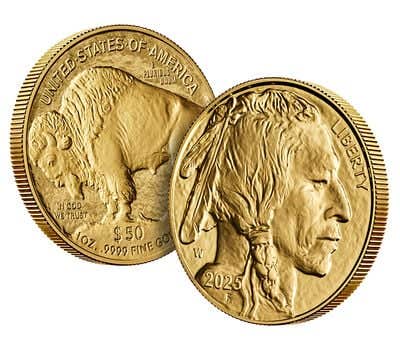Letters to the Editor (6/30/2015)
Credit cards offer handy means of making payments In the Viewpoint column of the June 2, 2015, issue is an article written by Mr. Bruce R. Frohman on the subject…
Credit cards offer handy means of making payments
In the Viewpoint column of the June 2, 2015, issue is an article written by Mr. Bruce R. Frohman on the subject “Electronic money a poor choice.”
If someone does not like to use credit cards that is fine, but to create a laundry list of evils is paranoia. I have been using credit cards for 45 years and not once have I experienced any of the problems in this list. The other day I was in a checkout line at a Wal-mart, the lady in front of me was paying in cash, she held up the line while she dug through her purse for the bills, quarters, dimes, nickels and cents. I charged my purchase and went through the line in about 10 seconds.
I happen to use a credit card that gives me cash rebates. I charge everything. I charge gum. Most months I get $25 to $50 back. Try doing that if you paid cash.
Credit cards also have built-in buyer protection. If you dispute a charge, your credit card company will work with you to resolve it. Try doing that, too, if you paid cash.
On another topic, in the same issue, there is an article that the U.S. Mint has to hire 86 people to aid in increased coin production. I’m happy that 86 people will now be employed but at what cost and why?
I have asked a question several times in the past and never read an answer. If coins are supposed to circulate, and if coins are meant to last up to 30 years or more, then why do we have to keep making so many of them? These aren’t postage stamps, where you use it once and it’s done. Where do they go? Something just isn’t right about this.
One more thing and I am caught up. There is a coin dealer I see at coin shows that has paper signs all over his booth that he does not deal with turkeys. Since I am unsure as to who he considers a turkey, when I see his signs I just keep on walking and spend my money elsewhere. Why alienate potential customers from the get-go?
Peter Glassman
Schaumburg, Ill.
Editor’s note: Coins do indeed last a long time. However, to answer your question, the Mint simply makes the number of coins the Federal Reserve orders. The Federal Reserve orders what its member banks request. The numbers basically reflect real-time demand for coins. Sure, many coins are taken home and dumped in all manner of containers and then simply sit until the owner decides to take them to a bank or Coinstar counter. When Coinstar was first introduced there was a noticeable impact on coin demand. When the Great Recession hit in 2009, there was a huge impact on demand for new coins from the Mint. The best guess is cash-strapped Americans cashed in all their coin hoards. This proves the point that coins have a long shelf-life, but that doesn’t necessary mean they get off the shelf and are actually used.
Gold Kennedy half dollar sales go on and on and on
Any idea of the mintage to date on the Kennedy Gold Half Dollar and when they may go off sale?
Name withheld
Editor’s note: The current sales figure is 72,296. The Mint has not set a date when sales will cease but has indicated in the past that 75,000 is the maximum it will sell. Each week the sales number appears on the second page of the two Mint Statistics pages almost at the bottom under Kennedy halves.
Easy to check paper money serial numbers for errors
In reference to the item in a recent Coin Clinic about fake miscut currency, there is an easy way to check. The serial numbers of all uncut sheets are available online. If you think you have a bill with a cutting error you can check the serial number to see if it actually came from an uncut sheet.
I toured the Bureau of Engraving and Printing facility in Washington recently and if you see how they print, cut, and inspect the bills, it is pretty hard to see how a cut error could get out. The folks working there have a sense of humor: on one of the presses was a sign reading “free samples tomorrow.”
David Guild
Durham, N.C.
Weekly poll raises question of the future of 2009 issues
Do you think the huge “No” from the online poll Lincoln cent question will affect the price of the 2009-S proof sets, or the 2009 Lincoln four-piece sets?
I understand the four-piece sets are the only copper cents and had a buy limit of five sets. Is this true?
Name withheld
Age 94
Editor’s note: It is not likely that a weekly opinion poll will have any impact on the price of any modern Mint-produced coin set.
The collector issues in 2009 that included cents had the 95-percent copper alloy that was specially resurrected for the bicentennial of Lincoln’s birth.
Cents from 2009 scarcer than you might think
I read over your article concerning the circulation of 2009 cents. I decided to check for them while searching my 5,000- cent bags I get from my banks.
These come from customers’ change jars. They bring the coin into the bank and it finds its way into $50 bags, which I purchase from the bank and search.
I could not believe the lack of these coins in change. I see one in every 300-400 cents.
People must be saving these coins for whatever reason. Reminds me when everyone saved Kennedy half dollars when they were first released.
On another subject, just before Easter I emailed you to tell you I found a 1914-D cent in one of those bags. Either you did not receive my email or you didn’t think it was worth mentioning.
Last week I found an 1835 Bust dime in a bag of pennies, the first time that has happened.
Vic Figlar
Pawleys Island, S.C.
Editor’s note: Your prior emailed submission appeared in the Letters section of the April 28 issue, which was a Numismatic News Express electronic issue. It can be found at the following link:
Sign up for it if you are not receiving it.
Homework required when ordering coins
I would hope that readers of NN do their homework when purchasing coins. For example, two back-to-back ads in a recent issue had the following items for sale:
Ad No. 1: 1919-P Lincoln PCGS MS-65 RB (red brown) – $295.
Ad No. 2: 1919-P Lincoln PCGS MS-65 RD (red) – $269.
Question to your readers: How do you go about deciding from whom you purchase coins from ads, and how much stock do you place on price differences?
Dan Sowards
Austin, Texas
Why do platinum Eagles attract so little interest?
Regarding platinum Eagles, to me at least it seems as though there has been rather low demand since their introduction. Do collectors realize how rare some of these issues are? Take the 2008 burnished coins. Some of the coins for this date approach mintages of 2,000-3,000. If a silver Eagle had that low a mintage, it would be hailed a new modern great rarity. The demand is that low? Is platinum considered to be some weird peripherally known metal at this day and age? Is it what people feel are ugly designs? Expense? Do many collectors even know they exist? I think this is interesting because I have read that the Mint scrapped plans for the $40 (correct denomination?) palladium Eagle based on the Mercury dime design. That sounds fascinating and the proposed designs I saw in this very periodical were really curious. However, the Mint concluded after a study that there would not be enough demand, partially based upon what happened in Canada. Why?
Blaine Buckman
Evansville, Ind.









